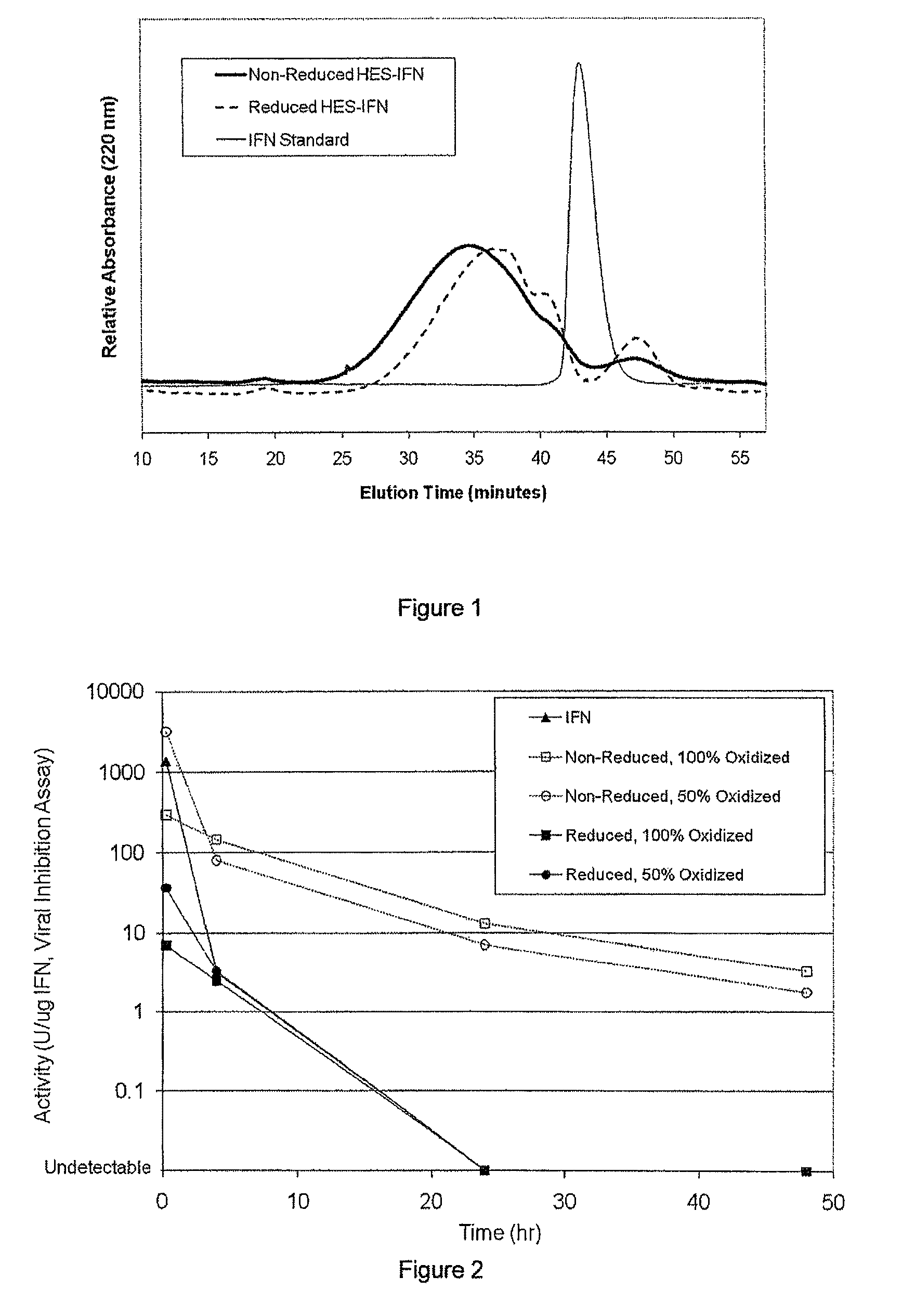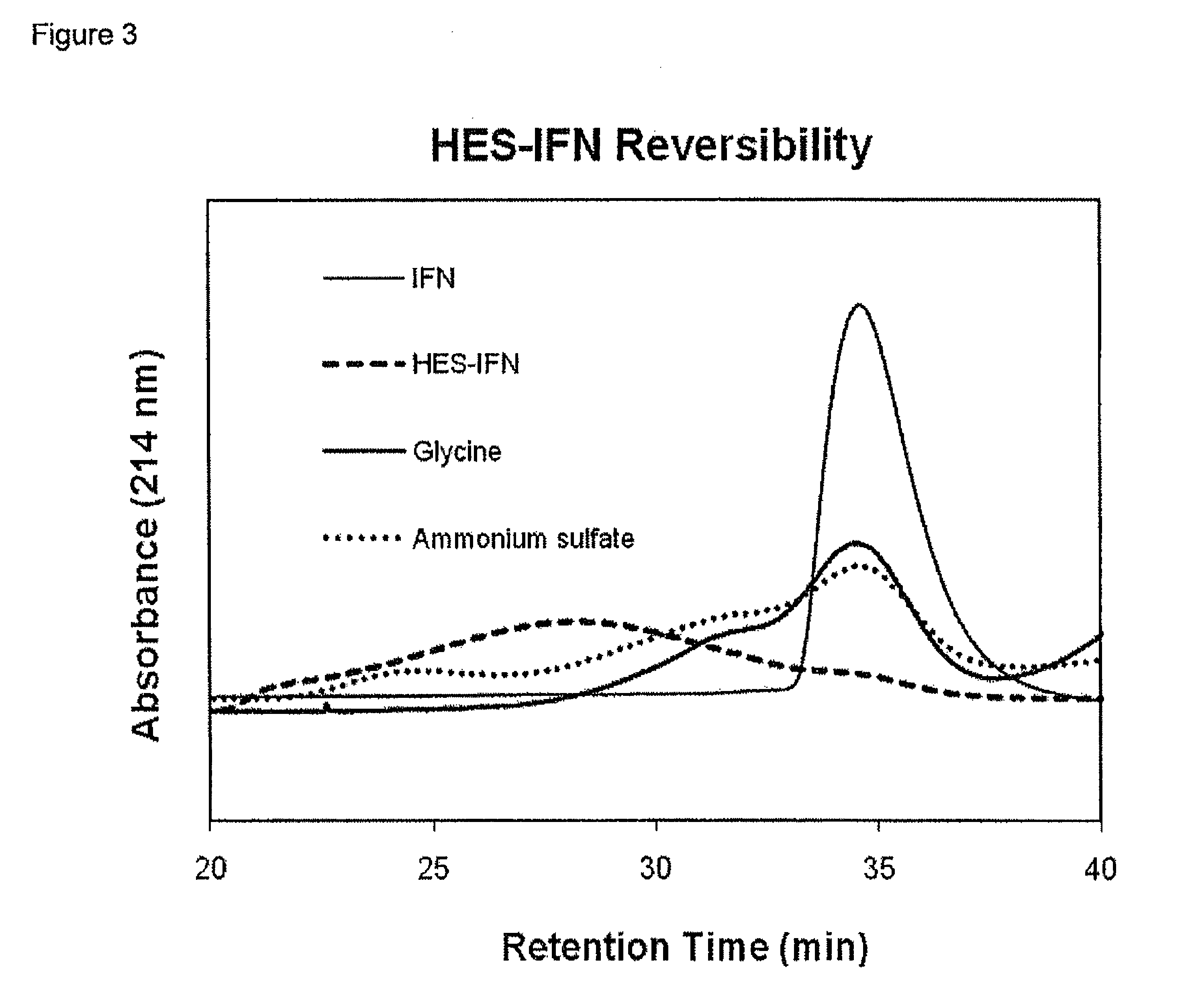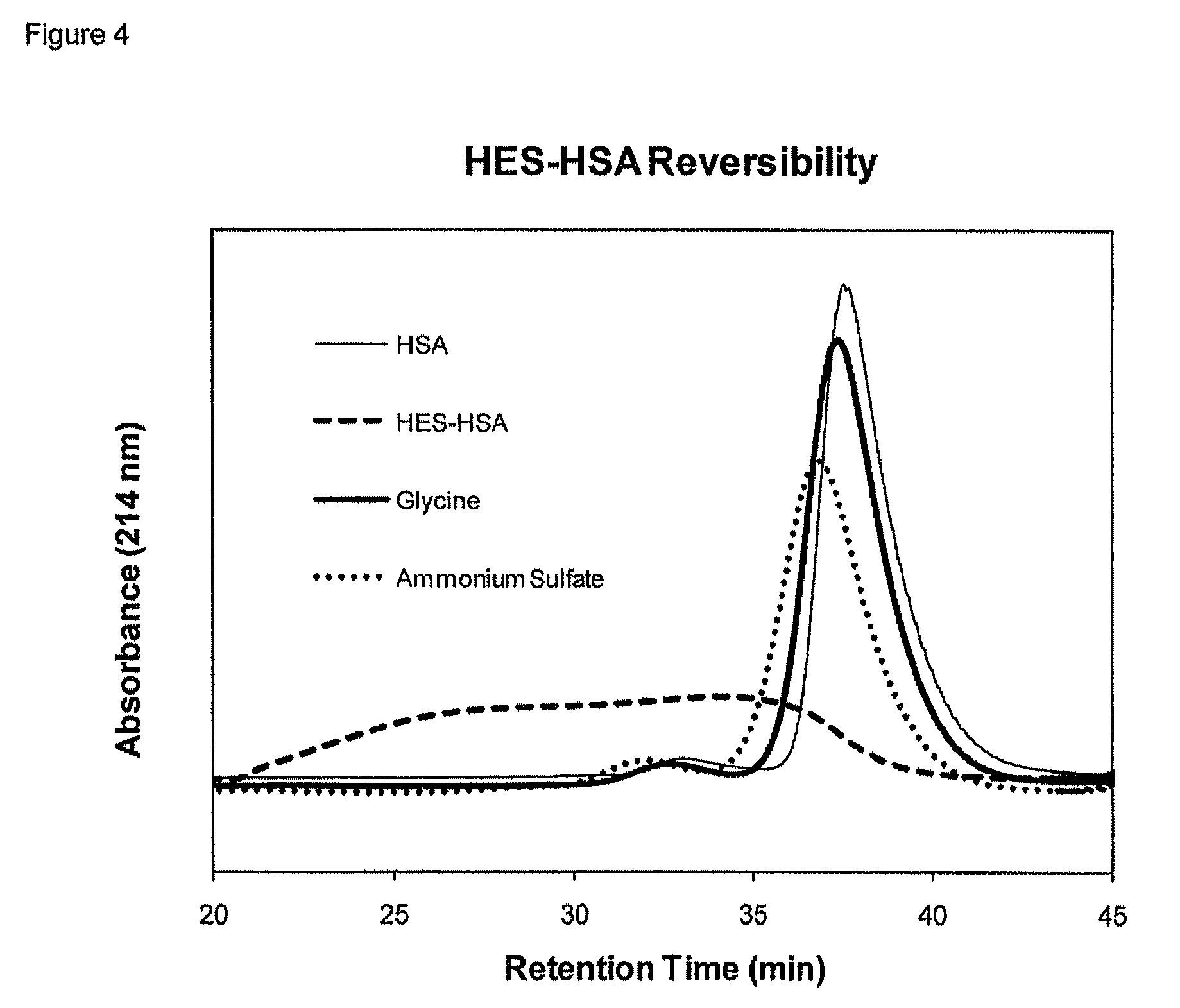Polysaccharide-protein conjugates reversibly coupled via imine bonds
a polysaccharide and conjugate technology, applied in the field of methods, can solve the problems of increased treatment cost, poor patient compliance, and toxicities of doses
- Summary
- Abstract
- Description
- Claims
- Application Information
AI Technical Summary
Benefits of technology
Problems solved by technology
Method used
Image
Examples
example 1
General Procedure to Prepare Oxidised Polysaccharides
[0284]The polysaccharide was dissolved by stirring in water. Sufficient sodium periodate (NalO4) was added to achieve the desired oxidation level and stirred. After a suitable time the reaction mixture was then concentrated and diafiltered against pure water using a low molecular weight cut-off membrane. Alternatively, low molecular weight salts were removed by dialysis, chromatography or other methods. Oxidised polysaccharide concentration of the recovered retentate was determined by lyophilizing aliquots of the retentate and weighing the dried residue.
example 2
Preparation of Oxidised Hydroxyethyl Starch (oxiHES)
[0285]Under aseptic conditions, 10.6 g hydroxyethyl starch (HES, 200 kDa weight-average molecular weight (WAMW), degree of hydroxyethyl substitution 0.5) was dissolved by stirring in 225 mL water overnight while cooling to 4° C. 8.8 g sodium periodate (NalO4) (1.1 eq. per vicinal diol) was added and stirring continued in the dark at 4° C. The reaction mixture was then concentrated to 100 mL and diafiltered against 10 volumes of water using a 5 kDa molecular weight cut-off (MWCO) polyethersulfone membrane.
[0286]The 50% oxidized HES was prepared by the same process, using 10.9 g of HES and 4.1 g NalO4 (0.5 eq. per vicinal diol).
[0287]10 and 25% oxidized HES were similarly prepared, as were oxidized versions of starch (without hydroxyethylation), by using the appropriate amounts of sodium periodate to produce the desired degree of oxidation.
[0288]HES and starch samples with weight-average molecular weight (WAMW) values between 1 and 2...
example 3
Preparation of 50% Oxidized Starch
[0289]10.01 g of starch (degraded waxy maize, 125.8 kDa) was dissolved in 200 mL of water at 4° C. To this was added 5.69 g of sodium periodate (NalO4:aldyhyde-producing monomer=0.5:1). The mixture was allowed to react for 4 hours at 4° C. The resulting reaction mixture was concentrated and diafiltered against 10 volumes of water using a 5 kDa MWCO membrane. The final oxi-starch solution was concentrated and filtered prior to use. The overall yield was 87%.
Preparation of Oxidized Polysaccharides-Protein Compositions
PUM
 Login to View More
Login to View More Abstract
Description
Claims
Application Information
 Login to View More
Login to View More - R&D
- Intellectual Property
- Life Sciences
- Materials
- Tech Scout
- Unparalleled Data Quality
- Higher Quality Content
- 60% Fewer Hallucinations
Browse by: Latest US Patents, China's latest patents, Technical Efficacy Thesaurus, Application Domain, Technology Topic, Popular Technical Reports.
© 2025 PatSnap. All rights reserved.Legal|Privacy policy|Modern Slavery Act Transparency Statement|Sitemap|About US| Contact US: help@patsnap.com



